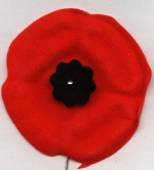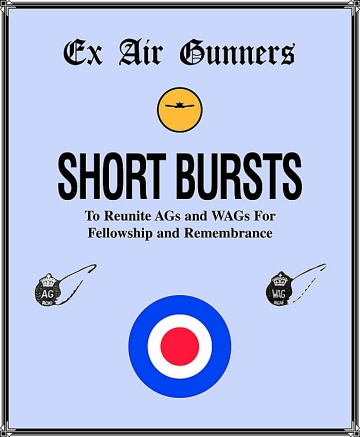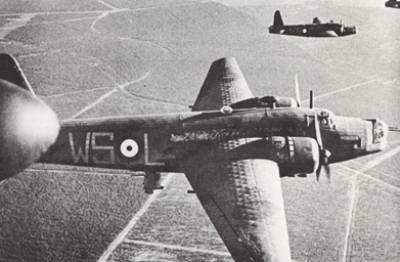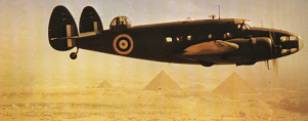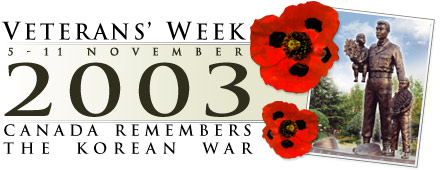The Hudson was a ubiquitous machine serving
in anti shipping and anti submarine duties in Canada, U.K., North Africa,
India, and Burma. Note the Pyramids in the above picture.
The following tells of a Canadian Hudson experience:
THE
BOMBING OF CHARLOTTETOWN by Glenn Clearwater – Winnipeg MB
During the last part of Feb. 1943, a Hudson a/c of
No.11(BR) Squadron was returning to its base at Dartmouth NS following
an anti submarine patrol. The weather had turned bad with high winds and
blizzard conditions making visibility nil. The crew of the Hudson were
informed that Dartmouth base as closed and that they were to try for an
alternate to the North.
All alternates were closed with the possibility RAF
31(GRS) Charlottetown being open, but when they arrived overhead they were
informed that it was now also closed. Remaining fuel indicated that the
crew could not stay airborne much longer and, with zero visibility, the
chance of a controlled landing anywhere was out. It was decided that they
would have to bail out. A course was communicated to the crew to be flown
where their depth charges could be jettisoned safely, and then a course
to fly which would enable them to bail out over land.
Some how things got fouled up. The depth charges landed
in open country between Charlottetown and 31(GRS). A large hole was blown
in the ground but, fortunately, there was no injuries or damage to property.
The crew then flew the course from which to bail out. The pilot put the
aircraft on “George” to keep it on an even keel when they jumped. The aircraft
roared away into the stormy night on its last few pints of fuel.
The four man crew landed on a smooth hard surface,
a large ice flow in the Straights of Northumberland where, huddled for
warmth under a parachute canopy, they spent the next four days and nights
before being found and rescued by the Borden to Tormentine ferry.
Outside of minor frostbite, the crew were in good shape,
and after a short stay in hospital, returned to 11(BR) for flying duties.
The Skipper was S/L Wilson K.C. who, at the time., was CO of 11(BR).
The end of the saga is rather bizarre. After the crew
left the Hudson with no one but “George” in charge, the aircraft flew on
until fuel exhausted, then with Mephistopheles’-lean mockery, landed itself
in the only stretch of open ground available and with minimum damage. A
local resident notified the officials and a salvage party arrived. The
aircraft was flown out of the field to Moncton NB before the original crew
had been discharged from the hospital.
The Charlottetown paper of the time carried a long
write-up of the event. Perhaps someone could see it in their archives.
On the same night three other aircraft were in trouble, two made it to
safety, however one, 11(BR) Hudson, trying to make it into Dartmouth, crashed
and blew up several miles short of runway #4, no survivors.
It would be interesting if any former 11(BR) personnel
recall this event.
Ross Hamilton – Kelowna,
BC
The October issue of Short Bursts received, and a great
job as usual. Just before some "Smart-Ass" takes you to task, may I offer
a bit of additional information relative to the Guinea Pig article? No
doubt someone omitted a name or two when composing the item, and I will
fill this in for you from a personal standpoint.
On page 8 there is mention of a "Dr. Ross", who worked
with MacIndoe. Actually, this chap, was W/C A.R. Ross Tilley. He headed
up the burn hospital at East Grinstead, a unit that was purchased and maintained
by the Canadian people, not the Canadian government per se.
Post war, Dr. Ross Tilley, and my son-in-law's father,
Dr. Ken MacEwen, also a RCAF M/O during wartime, were colleagues at one
of the big hospitals in Toronto, where Ken was a Radiologist Specialist.
If you have a copy of Larry Milberry's & Hugh Halliday's fine book,
"The RCAF At War, 1939-1945", .some of the Guinea Pigs story is on pages
154 & 155. Having run on about all of this, another story has come
to mind, and concerns a personal friend who flew Lancs on 207 Sqdn, Turns
out that Dave Sutherland was on the same Squadron, and knew Bill Baker
then. It is quite a story, regarding frozen hands after a mid-air collision.
By 1943 good deal was being learned about treating
burns suffered in combat, but little was known about frostbite. This story
illustrates one such happening, and thankfully it didn’t happen often.
It was my god fortune to meet up with F/L Bill Baker, DFC, Post-war, and
we were close friends for many years prior to his death in 1995.
Bill was a pilot on Lancasters on 207 Squadron. During
a raid on Penemunde Nov. 22, 1943, flying out of RAF station Spilsby, Bill’s
Lanc. and another from a different squadron, had a mid-air collision near
the target. The upshot was that the nose of Bill’s Lanc. Was sheared off
and his bomb aimer was sucked out, without a parachute, and fell to his
death. Also the port outer engine was badly damaged and put out of service.
They had bombed their target and set course for Waddington.
With the Lanc’s. nose sheared off, the gale now blowing
into the aircraft as fierce and it was around –50 degrees F. Bill was wearing
his leather flying gloves plus his silks, but his hands eventually froze
to the control column. His flight engineer looked after other duties in
the cockpit.
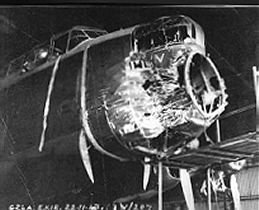
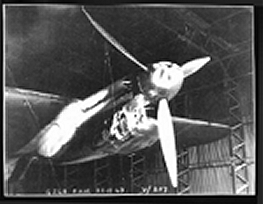
Damage to nose and Port engine of Bill Baker’s Lanc.
Near Holland Nazi spotlights zeroed in on them and
Bill had to dive and corckscrew to get rid of them. They landed safely
in Waddington and Bill was taken to sick quarters for examination. After
several days the fingers of both hands ballooned into sausage size. With
no help at this location, Bill was shipped down to the Military hospital
in London. Here it was determined that there was no known method of saving
the fingers and all eight were subsequently amputated right next to the
hand knuckles. The thumbs were saved.
While recovering in hospital, Bill was awarded the
DFC which was presented to him by no less a person than W/C Gibson,
VC. Sadly, a few days later, the medal was stolen by somebody in the hospital.
He was given a new one, but it never carried the same import as the original.
Upon leaving the air force Bill returned to university
and obtained his engineering degree. He and his long time sweetheart, Jeannie,
(WAAF on the station) were wed and settled in Niagara-On-The-Lake where
Bill was employed with ACRES Engineering Firm building bridges, dams, etc.
all over the world.
At an Air Gunner’s reunion at Stockton on Tees, in
1980, by way of a casual comment about a mid air collision, the two crews
involved were able to have a “meet-up” reunion. The other aircraft had
been so badly damaged that the crew had bailed out and, all but the pilot,
became prisoners of war. Their pilot went down with the plane. They
compared log books
and there even was mock finger pointing, “why didn’t
you watch where you were going....”
Bill always grieved his lost bomb aimer who fell into
Germany without a parachute. Eventually, Bert Dowty, in Lincoln, UK made
contact with a historian in Germany who was able to track the boy’s grave,
and furnish photographs of the military headstone. He had received a military
funeral. When the pictures and details were given to Bill, he broke down.
He was finally at peace knowing where his crewmate was buried.
Glen
Clearwater - Winnipeg
Have an extra minute? If you do, check out the following
two stories.
A little history never hurt anyone.
STORY NUMBER ONE
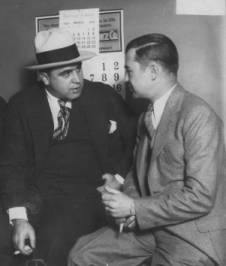
Al Capone and his lawyer – could it be “Easy” Eddy?
Many years ago, Al Capone virtually owned Chicago.
Capone wasn't famous for anything heroic. He was notorious for enmeshing
the windy city in everything from bootlegged booze and prostitution to
murder.
Capone had a lawyer nicknamed "Easy Eddie." He was
his lawyer for a good reason. Eddie was very good! In fact, Eddie's skill
at legal maneuvering kept Big Al out of jail for a long time. To show his
appreciation, Capone paid him very well. Not only was the money big, but
also Eddie got special dividends. For instance, he and his family occupied
a fenced-in mansion with live-in help and all of
the conveniences of the day. The estate was
so large that it filled an entire Chicago City block. Eddie lived the high
life of the Chicago mob and gave little consideration to the atrocity that
went on around him.
Eddie did have one soft spot, however. He had a son
that he loved dearly. Eddie saw to it that his young son had the
best of everything: clothes, cars and a good education. Nothing was withheld.
Price was no object.
And, despite his involvement with organized crime,
Eddie even tried to teach him right from wrong. Eddie wanted his
son to be a better man than he was. Yet, with all his wealth and influence,
there were two things he couldn't give his son; he couldn't pass on a good
name and a good example.
One day, Easy Eddie reached a difficult decision. Easy
Eddie wanted to rectify wrongs he had done. He decided he would go to the
authorities and tell the truth about Al "Scarface" Capone, clean up his
tarnished name and offer his son some semblance of integrity.
To do this, he would have to testify against The Mob,
and he knew that the cost would be great. So, he testified. Within the
year, Easy Eddie's life ended in a blaze of gunfire on a lonely Chicago
Street. But in his eyes, he had given his son the greatest gift he had
to offer, at the greatest price he would ever pay.
STORY NUMBER TWO
World War II produced many heroes. One such man was
Lieutenant Commander Butch O'Hare. He was a fighter pilot assigned to the
aircraft carrier Lexington in the South Pacific.
One day his entire squadron was sent on a mission.
After he was airborne, he looked at his fuel gauge and realized that someone
had forgotten to top off his fuel tank. He would not have enough fuel to
complete his mission and get back to his ship. His flight leader told him
to return to the carrier.
Reluctantly, he dropped out of formation and headed
back to the fleet. As he was returning to the mother ship he saw something
that turned his blood cold A squadron of Japanese aircraft were speeding
their way toward the American fleet.
The American fighters were gone on a sortie, and the
fleet was all but defenceless. He couldn't reach his squadron and bring
them back in time to save the fleet. Nor could he warn the fleet of the
approaching danger. There was only one thing to do. He must somehow divert
them from the fleet.
Laying aside all thoughts of personal safety, he dove
into the formation of Japanese planes. Wing-mounted 50 caliber's blazed
as he charged in, attacking one surprised enemy plane and then another.
Butch wove in and out of the now broken formation and fired at as many
planes as possible until all his ammunition was finally spent. Undaunted,
he continued the assault. He dove at the planes, trying to clip a wing
or tail in hopes of damaging as many enemy planes as possible and rendering
them unfit to fly.
Finally, the exasperated Japanese squadron took off
in another direction. Deeply relieved, Butch O'Hare and his tattered
fighter limped back to the carrier. Upon arrival he reported in and related
the event surrounding his return.
The film from the gun-camera mounted on his plane told
the tale. It showed the extent of Butch's daring attempt to protect his
fleet. He had in fact destroyed five enemy aircraft.
This took place on February 20, 1942, and for that
action Butch became the Navy's first Ace of WW II, and the first Naval
Aviator to win the Congressional Medal of Honour. A year later Butch was
killed in aerial combat at the age of 29. His home town would not allow
the memory of this WW II hero to fade, and today, O'Hare Airport in Chicago
is named in tribute to the courage of this great man. So the next time
you find yourself at O'Hare International, give some thought to visiting
Butch's memorial displaying his statue and his Medal of Honour. It's located
between Terminals 1 and 2.
SO WHAT DO THESE TWO STORIES
HAVE TO DO WITH EACH OTHER?
Butch O'Hare was Easy Eddie's son.
Further to this article, the City of Moose Jaw Saskatchewan
has reopened the tunnels under their city. These tunnels were used by Al
Capone and his gangster associates during prohibition days. Capone would
purchase liquor in Moose Jaw (from eastern breweries) and ship it down
the Soo Line into the USA. The picture of Capone and his lawyer above was
taken in the tunnels some time in the ‘20s. If you don’t believe me, go
to http://www.tunnelsofmoosejaw.com
for the straight Gen.
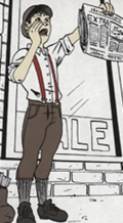
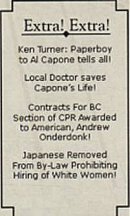
Don
Macfie – Dunchurch ON
Blessed is the crew that had one – a joker, that is. Every
deck of cards has one and, hopefully every crew had one to help through
worries and fears on Ops.
Our Sunderland crew of 11 to 12 members had one by
the name of George Irving from Meaford, Ont. George was the product
of a very early coarse in Wireless training in Canada, and when he got
overseas he didn’t improve much despite what Cranwell or Yatesbury could
do for him. He was shuffled off to SE11 at Prestwick on Botha aircraft
and there he shined. He could read that time base (radar) when the rest
of us couldn’t. But he was the keeper of an endless supply of ribald jokes
and songs.
When, as a dispirited group, we stood in the
drizzling rain, on the pier at 3AM awaiting a dinghy to take us to the
aircraft, George was likely to break loose with his rendition of “Mary
had a little lamb” or sing, “Starkle, starkle, little twink, what the hell
you are I think”, or one of his encounters with the Duchess concerning
her daughter. By the time we reached the “Kite” we were in better humour
to start our Op.
Once we made a landfall in an Atlantic gale up against
the 1500 foot cliffs of Arran, Ireland. Visibility was almost nil and the
waves were climbing the cliff so high we were getting drenched in sea-water.
I got out of the rear turret where I was getting wet but George continued,
seemingly unperturbed, in the mid-upper.
When we did find the mouth of the river that would
lead us to our base at Castle Archdale, the visibility was still poor.
We hopped hydro lines and passed down the middle of a main street. Looking
up at the town clock as we went by, George called up the navigator and
asked him if he had synchronized his watch!
Three years later my Skipper and I were accompanying
a lamppost in front of the Regent Palace in London – we were parting for
the last time. The lights were all on and the streets deserted, no other
uniforms in sight. He says to me, “Red, do you remember that time we were
crawling the cliffs trying to find the river mouth in the fog.” I said
that I sure did. He said, “Well, things were so desperate that I figured
we were not going to make it. I was praying for our souls. But then I heard
George over the intercom call up Ray Snelus in the bomb bay and ask him
which one of the two girls they were taking out that nigh he wanted. Right
then I knew we were going home!”
Jim
Coles, Balgonie, SK
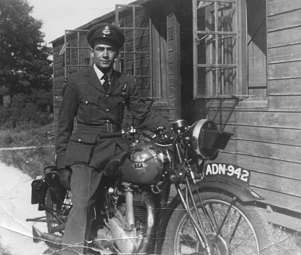
Jim Coles 77 Squadron RAF
Jim loaned me a copy of 77 Squadron Association newsletter,
Nickel Leaflet No. 30, 1 October 2003. Opposite a query regarding the Gelsenkirchen
Operation 9/10 July 1943, Jim has added; My 7th trip 6:30 hrs.
The following is one of the Nickel Leaflet articles
with a Canadian connection:
WE
WERE ALL YOUNG MEN
But, some were younger than others and, none were much
younger than Eric Fedi of 77 Squadron then based at Elvington.
On 28 March 1943, Sergeant R.W.F. Munns, Pilot, was
posted with his crew to 77 Squadron, then under the command of Wing Commander
A.E. (Lofty) Lowe MBE. Sgt. Eric Fedi, RCAF, was the mid-upper gunner in
the crew and he was then 16 years of age. The crew operated for the first
time on 14 April 1943 when the squadron put up 16 aircraft to attack STUTTGART.
Their aircraft on this occasion was Halifax 11, JB865 KN ‘J’.
They flew their last operation on 7 September 1943
when, in Halifax 11, DT793 KN, ‘E’, they flew to MUNCHEN (Munich). Following
take-off from Elvington at 1918 hours, nothing further was heard of the
aircraft or crew and they were therefore reported ‘Missing’, presumed ‘killed’.
The names of the crew are recorded on the Runnymede Memorial at Panels
132, 133, 165, 167, 169, 170, and 181. R172702 flight Sergeant Eric Fedi,
RCAF, was just 17 years of age when he was killed defending our freedom.
The 77 Squadron Association Newsletter is edited by
Harry Shinkfield. 154 Broadway, Wakefield WF2 8AQ . West Ridingof Yorkshire.
UK
George (Ole) Olson
October 23, 2003.
On behalf of 2nd T.A.F./M.B.A. Canadian Wing
Tribute To Air Marshal C.R. (Larry)
Dunlap
